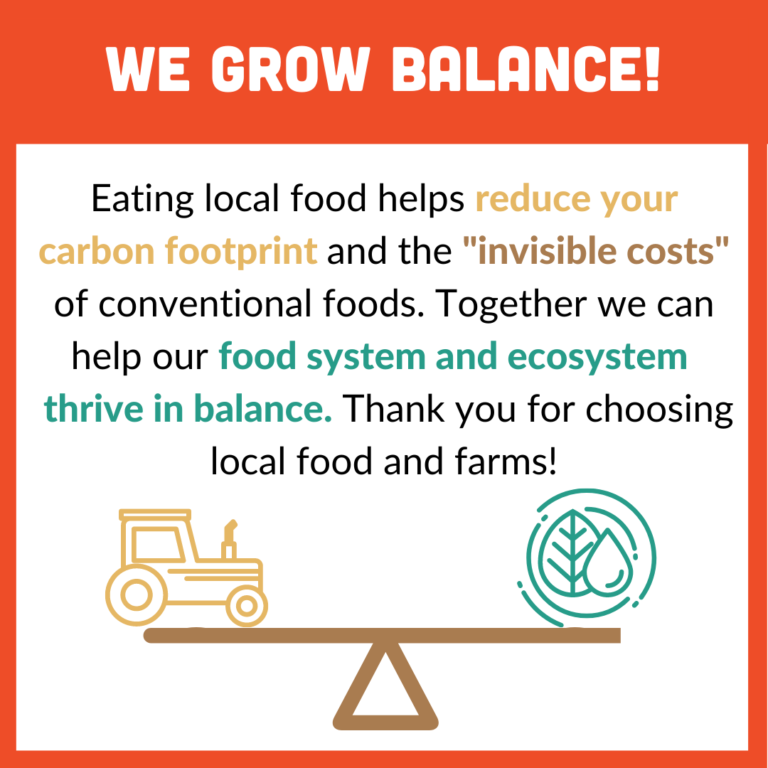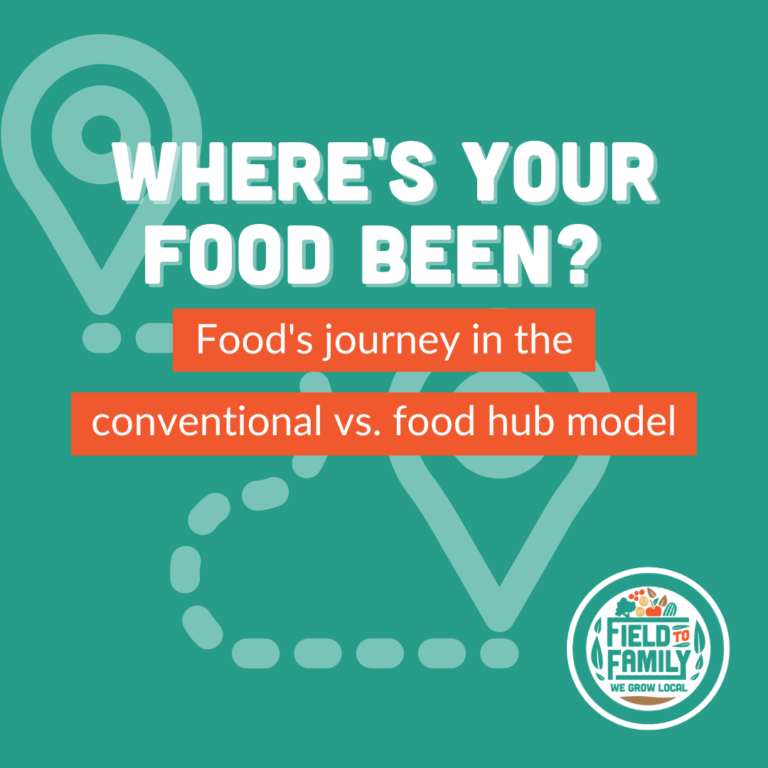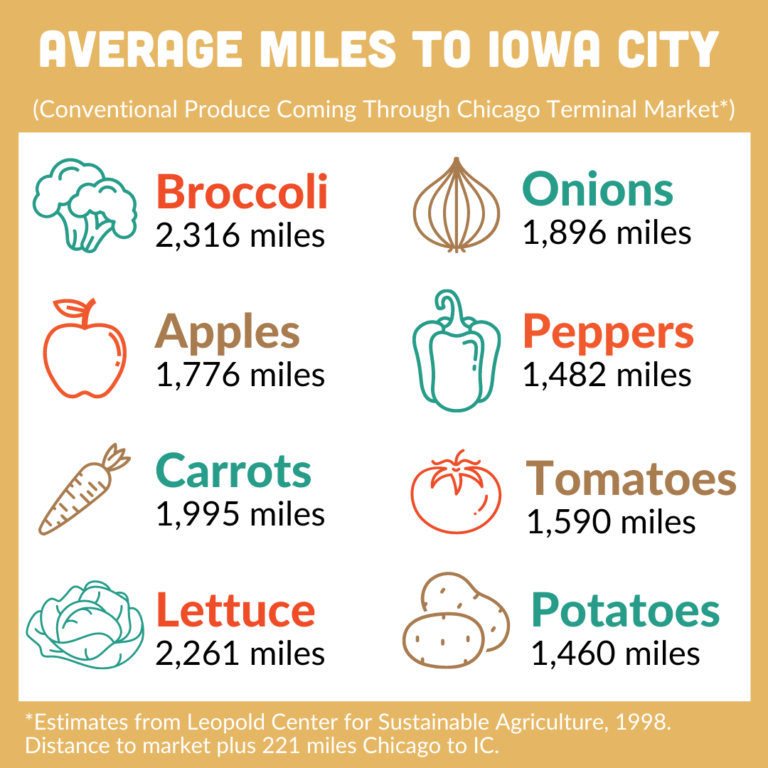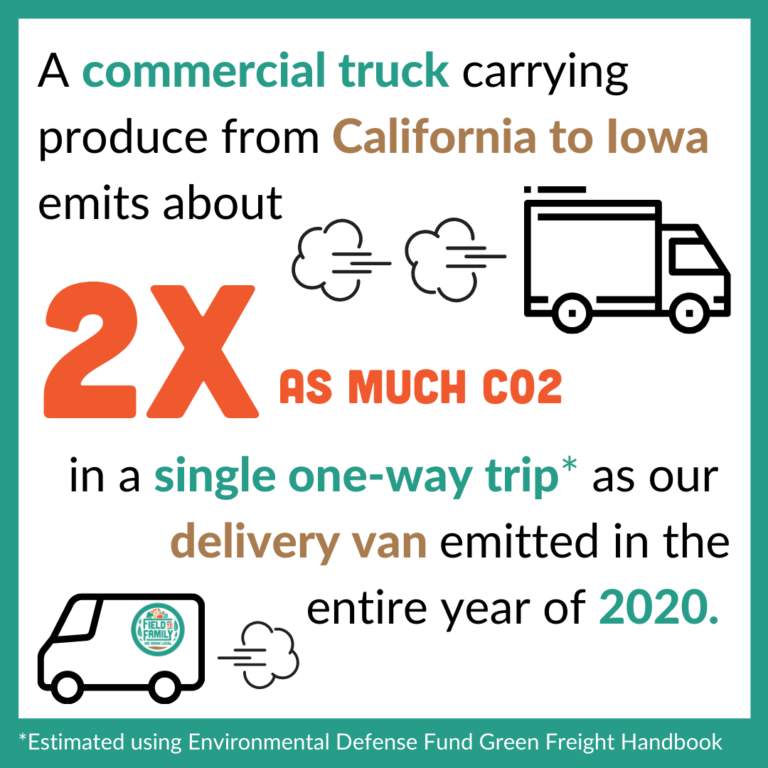Where does your food come from?
Over a third of global greenhouse gas emissions come from food systems, according to the United Nations FAO. It’s almost impossible to create a truly carbon-neutral plate, but some options are less impactful than others. Food grown and consumed locally has the benefit of travelling far fewer miles from farm to plate than conventional foods. The food hub model in particular helps create a more carbon-efficient, streamlined and sustainable food system.
The Conventional Food Supply Chain
In the conventional system, food tends to make numerous stops between the farm and your plate. The journey doesn’t always take the shortest path from Point A to Point B either, moving from farms to processors to distributors to retailers all across the country (or even the world).
The term “food miles” refers to the distance food travels from producer to consumer and is often used to calculate the environmental impact of a product. According to the 1998 “Food, Fuel and Freeways” study by the Leopold Center for Sustainable Agriculture in 1998, the average piece of produce travels over 1,500 miles to a distributor in Chicago before heading to Iowa. A significant amount of that produce originates in California, passing through Iowa to get to the distributor, then turning around to cross back over the Mississippi River to Iowan retailers.
The carbon footprint of food transportation alone is enormous, increased further by the need to keep food frozen or refrigerated over vast distances on the road, in the air or at sea. The Environmental Defense Fund published a “Green Freight Handbook” to help calculate carbon dioxide emissions in the transportation sector. Air travel has by far the greatest environmental impact. In the U.S., food is largely transported by commercial trucks. Using the handbook, we calculated that a 20-ton commercial truck carrying produce directly from California to Iowa would emit about 6 metric tons of CO2 in a single one way journey.
The Local Food Supply Chain & Food Hubs
While being “local” doesn’t always make food more sustainable, eating food grown close to home at the very least reduces the food miles in your diet and the carbon footprint of your life style. Food typically takes a more direct path from farm to plate, perhaps being passed from producer to consumer face-to-face at a farmers market, or reaching consumers through a retailer or food hub in the area.
The food hub model in particular is one promising way to “scale up” local food production and get large amounts of local produce into communities more efficiently. The U.S. Department of Agriculture defines a food hub as “a centrally located facility with a business management structure facilitating the aggregation, storage, processing, distribution, and/or marketing of locally/regionally produced food products.” In plainer terms, a food hub is like a middle-man between farmers and consumers in a region, aggregating, offering and distributing products from many farms to many customers.
Field to Family operates a food hub out of Iowa City that serves wholesale, institutional customers, all located within 100 miles of Johnson County. Farmers bring their products to us, and we bring the products to the customers, who typically order products from several growers at once. The result is a more efficient model than farmers making deliveries straight to customers. In all, we calculated that our wholesale delivery van emitted about 2.8 metric tons of CO2 in the entirety of 2020.
The takeaway: eat more food grown close to home to reduce your carbon footprint and support a more efficient food system!





